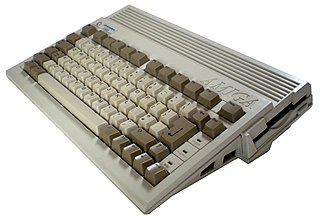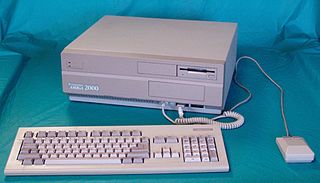This article does not cite any sources .(September 2017) (Learn how and when to remove this template message) |
GO-64! was an early software emulation of the Commodore 64 computer, with a copyright date of 1988 for version 2.0.

In computing, an emulator is hardware or software that enables one computer system to behave like another computer system. An emulator typically enables the host system to run software or use peripheral devices designed for the guest system. Emulation refers to the ability of a computer program in an electronic device to emulate another program or device. Many printers, for example, are designed to emulate Hewlett-Packard LaserJet printers because so much software is written for HP printers. If a non-HP printer emulates an HP printer, any software written for a real HP printer will also run in the non-HP printer emulation and produce equivalent printing. Since at least the 1990s, many video game enthusiasts have used emulators to play classic arcade games from the 1980s using the games' original 1980s machine code and data, which is interpreted by a current-era system.

The Commodore 64, also known as the C64 or the CBM 64, is an 8-bit home computer introduced in January 1982 by Commodore International. It has been listed in the Guinness World Records as the highest-selling single computer model of all time, with independent estimates placing the number sold between 10 and 17 million units. Volume production started in early 1982, marketing in August for US$595. Preceded by the Commodore VIC-20 and Commodore PET, the C64 took its name from its 64 kilobytes(65,536 bytes) of RAM. With support for multicolor sprites and a custom chip for waveform generation, the C64 could create superior visuals and audio compared to systems without such custom hardware.
The name most likely comes from the ability for the Commodore 128 computer to switch to a hardware emulation of the Commodore 64 by typing GO64 at the BASIC prompt and pressing the return key.
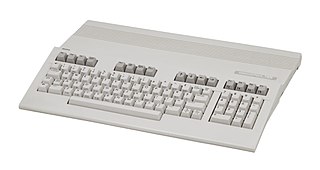
The Commodore 128, also known as the C128, C-128, C= 128, is the last 8-bit home computer that was commercially released by Commodore Business Machines (CBM). Introduced in January 1985 at the CES in Las Vegas, it appeared three years after its predecessor, the bestselling Commodore 64.
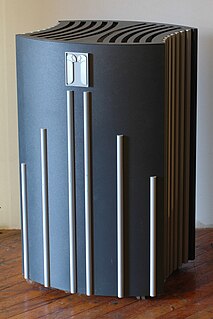
In integrated circuit design, hardware emulation is the process of imitating the behavior of one or more pieces of hardware with another piece of hardware, typically a special purpose emulation system. The emulation model is usually based on a hardware description language source code, which is compiled into the format used by emulation system. The goal is normally debugging and functional verification of the system being designed. Often an emulator is fast enough to be plugged into a working target system in place of a yet-to-be-built chip, so the whole system can be debugged with live data. This is a specific case of in-circuit emulation.

BASIC is a family of general-purpose, high-level programming languages whose design philosophy emphasizes ease of use. In 1964, John G. Kemeny and Thomas E. Kurtz designed the original BASIC language at Dartmouth College. They wanted to enable students in fields other than science and mathematics to use computers. At the time, nearly all use of computers required writing custom software, which was something only scientists and mathematicians tended to learn.

This software was created by Christopher P. Zura and Cliff Dugan of Software Insight Systems Inc.
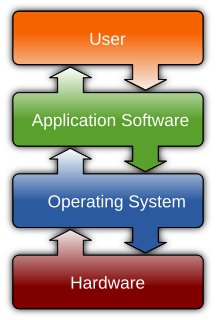
Computer software, or simply software, is a collection of data or computer instructions that tell the computer how to work. This is in contrast to physical hardware, from which the system is built and actually performs the work. In computer science and software engineering, computer software is all information processed by computer systems, programs and data. Computer software includes computer programs, libraries and related non-executable data, such as online documentation or digital media. Computer hardware and software require each other and neither can be realistically used on its own.
It allowed the use of some software and hardware designed for Commodore 64 computers on Amiga computers.

The Amiga is a family of personal computers introduced by Commodore in 1985. The original model was part of a wave of 16- and 32-bit computers that featured 256 KB or more of RAM, mouse-based GUIs, and significantly improved graphics and audio over 8-bit systems. This wave included the Atari ST—released the same year—Apple's Macintosh, and later the Apple IIGS. Based on the Motorola 68000 microprocessor, the Amiga differed from its contemporaries through the inclusion of custom hardware to accelerate graphics and sound, including sprites and a blitter, and a pre-emptive multitasking operating system called AmigaOS.
It required a minimum of 512kb of RAM to operate, but 1024kb of RAM was required to make use of all features. If a 68020 CPU was installed, it could operate at speeds exceeding the speed of a real Commodore 64, according to the developers.

Random-access memory is a form of computer data storage that stores data and machine code currently being used. A random-access memory device allows data items to be read or written in almost the same amount of time irrespective of the physical location of data inside the memory. In contrast, with other direct-access data storage media such as hard disks, CD-RWs, DVD-RWs and the older magnetic tapes and drum memory, the time required to read and write data items varies significantly depending on their physical locations on the recording medium, due to mechanical limitations such as media rotation speeds and arm movement.

The Motorola 68020 is a 32-bit microprocessor from Motorola, released in 1984. It is the successor to the Motorola 68010 and is succeeded by the Motorola 68030. A lower cost version was also made available, known as the 68EC020. In keeping with naming practices common to Motorola designs, the 68020 is usually referred to as the "020", pronounced "oh-two-oh" or "oh-twenty".
This software does not operate on versions later than 1.3 of the Amiga Kickstart, and so does not operate on the Amiga 3000, Amiga 500 plus, Amiga 600, Amiga 4000 or Amiga 1200.
Kickstart is the bootstrap firmware of the Amiga computers developed by Commodore.

The Commodore Amiga 3000, or A3000, is a personal computer released by Commodore in June 1990. It features improved processing speed, improved rendering of graphics, and a new revision of the operating system. It is the successor to the Amiga 2000.

The Commodore Amiga 500 Plus is an enhanced version of the original Amiga 500 computer. It was notable for introducing new versions of Kickstart and Workbench, and for some minor improvements in the custom chips, known as the Enhanced Chip Set.






| This emulation-related article is a stub. You can help Wikipedia by expanding it. |



